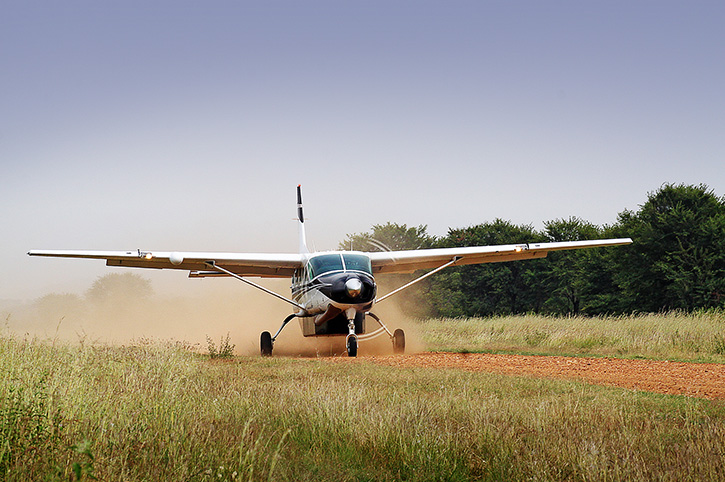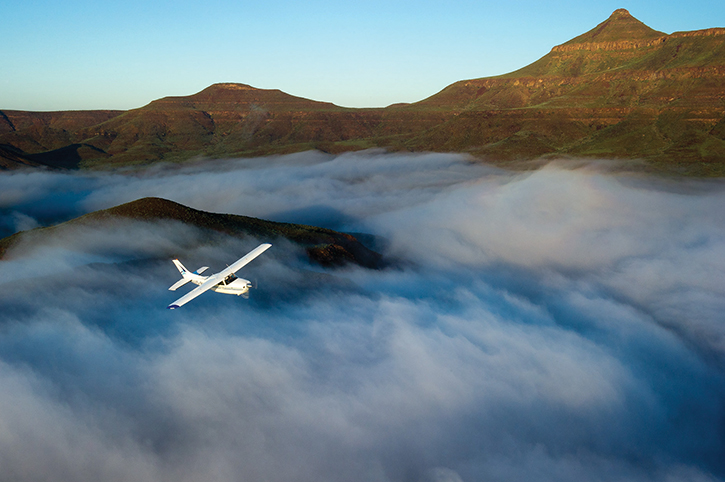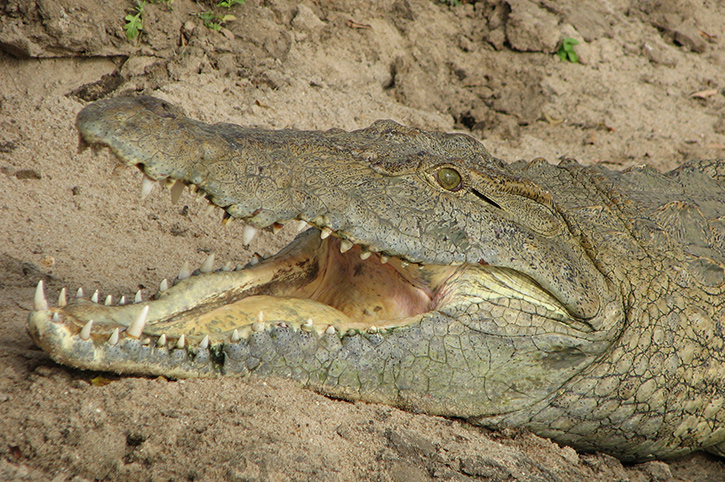
On the same day that my wife and I landed at a safari camp in Kenya, a lovely couple from Darwin, Australia also arrived. Ken and June nearly froze to death on their first morning safari drive.
Having come from Darwin. they were used to a tropical climate, and because it was always sunny in the photos they had seen of Africa, they had presumed that a T-shirt and shorts would be all that they would need on safari.
The reality is that, despite quite high temperatures by day, even in the Sahara Desert gets cold at night, and so the Kenyan bush is no exception. In addition, sitting at the back of an open 4×4 vehicle, speeding off in search of early morning animal sightings, it can be a little exposed.

“Nobody told us it got cold in Africa,” said Ken. The following morning, Ken and June were huddled under many blankets and wearing most of the contents available at the camp’s souvenir shop!
Did you know that most animals are colour blind? Although scientists tell us that is true, we are also frequently told that you should avoid wearing bright coloured clothes on safari. So, should we all dress up like safari guides in khaki and green, or can we wear our normal wardrobe? In reality, it does depend on what activities you are doing, but let me explain why bright colours are not the best idea to take on safari.
If you are likely to be spending most of your time inside a safari vehicle, then it doesn’t matter that much what colour you are wearing. Animals will generally just see the vehicle as a solid object and cannot differentiate you from the vehicle. Of course, if you were to stand up, move inside the vehicle or step outside the vehicle then they can easily see you as a human form or food, depending on what animal is looking at you. Wearing bright colours just makes it easier for animals to see you as not part of the vehicle.

It may be an apocryphal story, but a guide once told me that there were a group of tourists trying to take photos of lions. However, as lions do most of the time, the lions were asleep or quietly dozing during the heat of the day, so the group were disappointed. To get the lions to look at their cameras, one tourist took it on himself to get out of the vehicle!
It did have the desired effect. As the door slammed closed behind the man, every lion woke up and looked at the cameras. However, this was mainly because another lion, that had been snoozing in the shade of the vehicle, now had its teeth wrapped around the tourist’s leg!
When observing animals in the wild, you will generally want to blend into the surroundings, so wearing bright colours in Africa is not going to help. Particularly if you are going on a walking safari, neutral colours like brown, olive green and beige are best for blending into the African Bush. Black and white should be avoided unless you are a zebra, whilst blue should also be avoided as it Is known to attract insects including mosquitos and tsetse flies. There is a good reason that all the guides wear khaki-coloured clothes, and it isn’t fashion.
The best advice I can give for what to take on safari is; take as little as possible.
In essence a safari is several journeys around the African bush, interrupted by meals. Your journeys may be by aircraft, 4×4 vehicle or boat but the constant is meals at set times. You can’t miss breakfast, lunch, and dinner, whilst every afternoon drive has to end with a sundowner. This is the tradition of stopping the vehicle at an appropriately scenic spot to enjoy your choice of drink as the sun slowly sinks beyond the horizon. Every sunset in the African bush is an event, and they will be etched on your memory for evermore.

It is amazing what the guides can produce from the back of their 4×4 vehicle. On occasions I have ended up sat on chair in front of a table with linen tablecloth and napkins, drinking a cocktail and sampling home-baked cake as the sun sets. It is remarkably civilised, and everything is provided for you. This also means that you don’t have to bring that much with you.
It is likely that to travel to and between safari camps you will need to fly. This is particularly true in Botswana, where the Okavango Delta, isolates camps and leaves flying in as the only option. This involves a journey on a light aircraft. This can be a single or twin-engine Cessna type plane or similar. These aren’t renowned for comfort, head room or luggage space. They do provide an excellent network that carries you from camp to camp, or even country to country. They also provide exceptional views of the African Bush, and I strongly advise keeping an eye out for herds of elephant in the bush below as you fly above.

If you are flying in a light aircraft, it is likely that you will be advised of a weight limit to your luggage. This can be as little as 15 kilograms, which isn’t a lot for what can be a two-week holiday. With this in mind, there are two things you need to consider about your luggage.
The first thing is obviously weight. To enable you to take essentials like your camera and binoculars, you want to ensure your case or bag is as light as possible. Clearly the heavier your bag is when empty, the less you will be able to fill it with.
You will want to take just the essentials like T-shirts and shorts and good walking shoes. Long sleeved shirts and long trousers are good for chilly mornings and evenings, as is a fleece or similar. Along with your camera, plenty of memory cards for photos and whatever chargers you require, then insect repellent and sunscreen are of equal importance! You really want to keep your pilot on your side, so turning up with too much or overweight luggage is really not a good start.

The second thing to remember is flexibility. Space is extremely tight on these types of aircraft. They are not designed to transport a lot of goods. However, quite often they are used to transport essential items like food, vehicle parts and staff between camps. This means that your bags are going to need to fit alongside other bags in the hold of the aircraft, or quite often just behind a cargo net at the back of the cabin. A rigid suitcase is pretty difficult to fit in to corners or behind a seat in a light aircraft, so instead ensure your clothes etc. are packed into a canvas or soft-sided bag. In the worst-case scenario, a guide may have to forgo a seat and sit on some bags at the back of the cabin, and you want your guide to be comfortable don’t you?
Safari Holidays by Freedom Destinations
The title of this section is a little unfair, as you are going to have to use at least some of these modes of transport on any safari, so this is more about how to avoid some of the common pitfalls of using different forms of transport.
Most safaris will include drives in a 4×4 vehicle. These are usually specially adapted Land Rovers or Toyota Land Cruisers that have up to 3 tiers of seating behind the driver. Although some companies employ van style vehicles with glass windows and a pop-up roof, I would always advise against these in favour of the traditional 4×4. The views are better, and they can more easily get around the bush if moving off the well-worn tracks is necessary.
Always remember that the tracks may well be worn but they are far from smooth. The suspension of your safari vehicle will be tested each time it goes out and so will your back. You will get used to bouncing around the seats as your guide takes you off in search of the next sighting.

After one particularly bumpy ride where our guide was driving off the track to keep up with a hunting cheetah, he turned to us with a grin, and asked “Are you enjoying the African massage?”
Your body can really take a battering if you are not holding on properly. It is also worth noting that although the rear seats are the highest in the vehicle and provide great views, they are also located beyond the rear wheels, so the movement up and down is greatly exaggerated compared to the other seats.
We have already discussed that you may need to fly in a light aircraft to complete your safari. The downside of being in such a small aircraft is stability, so if you ever suffer from airsickness then I suggest taking a pill or something beforehand.
If you can, it Is advisable to fly in a morning, this is because as the ground heats up around midday, it creates thermals of hot air rising and cool air descending. This can cause turbulence that is interesting to experience in such a small plane.
These plane transfers are like the buses of the bush. They hop from strip to strip picking up and dropping off passengers. Sometimes they even have to fly past the runway to clear it of local wildlife before it can land!

After our first safari in Kenya, we were expecting to fly from the Masai Mara to our beach holiday on the coast in Mombasa. After we had boarded our scheduled aircraft, our pilot informed us of a schedule change and that he would only be taking us part of the way. We would need to change planes mid journey. So it was, that after a short flight, we were landing again at a remote airstrip in the bush.
As we disembarked and our (light and soft!) bags were removed from the back of the plane, we realised that nobody else was here. There was a small tin bus-shelter and us. Our pilot said not to worry, and that “Bob” would be along shortly in another plane. So, we watched our plane depart and we were left with our bags in the middle of nowhere, with just a tin shack for shelter. There were zebras wondering across the runway, and suddenly we felt quite small in a very big world.
Fortunately for us, the sound of another plane approaching settled the nerves, and sure enough a different plane landed and taxied across to us. Once the noise of the engines had abated. the pilot climbed out of the cockpit and said, “Hi I’m Bob, do you guys want a lift?”.
Seeing the African bush by boat is a great experience. It gives you a completely different view and allows you to see scenery and animals not easily visible from a vehicle. You can be on a motorboat or Mokoro (traditional wooden carved canoe) on the Okovango Delta and witness large animals like elephant crossing the channels, or spot small fish and frogs making the most of the seasonal waters.

My wife and I decided to be brave and take to a canoe on the Zambezi River, not too far from Victoria Falls on the Zambian side. It was an amazing experience spotting birdlife and hippos at eye level on the water. We had a guide with us to help us spot the wildlife and assist with the paddling!

As we stepped into the canoes our guide, called Patrick, said he had to take us through the safety notices, much like any other forms of transport. “The emergency exits are on both sides of the canoe. In the event that we are capsized by a raging hippo, please ensure that you swim as swiftly as possible to the riverbank with the least number of logs near the water’s edge.”
If that introduction wasn’t concerning enough, I asked, “Why do you want us to avoid the logs?”. Patrick replied, “because they aren’t really logs, they are the crocodiles!”. His straight face broke out into the biggest grin as he saw the panic now on our faces.

If you aren’t skilled with a DSLR camera, then don’t buy one especially for a safari. It takes time to learn the controls to be able to take good photos and know what lenses you require for the shot you want. You don’t want to be messing about with your equipment on safari. Wildlife rarely poses for photos. If you are too slow to press the shutter, then you will end up with an animal’s backside at best.

I have made this mistake and it nearly proved very costly.
On a safari in Namibia, close to Etosha National Park, our driver and guide spotted a rhino disappearing into a thicket. We couldn’t follow in the vehicle, so having surveyed the area, he decided that it was safe to get closer on foot. Now, you can argue the merits of this action, but we dismounted from the vehicle and followed the guide into the thicket to look for the rhino.
It didn’t take long to locate the rhino. Rhinos are short sighted, and we were downwind, so our approach had gone unnoticed by the rhino. There were six of us in the group including the guide and about twenty metres from the rhino our guide advised us to get our photos before we turned around and left the rhino alone.
I had a new DSLR and was still getting used to the controls and began taking some shots, adjusting the settings, and taking some more shots. Then I decided to change the lens, so began the process of unscrewing etc.
Around this time two major things happened simultaneously; a baby rhino appeared from behind her mother, and the wind changed direction. Suddenly the protective mother could smell that something was in the thicket with her and her baby. She may not have been able to see us yet, but she knew that we were there, and she didn’t much appreciate it.
I was just fitting my new lens to my camera when I noticed that the mother rhino was now moving towards us and grunting in a way that is universally recognised as a challenge. I was on my knees in the thicket with camera in hand transfixed as this mother rhino closed in on me.
Notice I haven’t said she was closing in on us? This is because the rest of the group, including my wife, under the instruction of the guide were already exiting the thicket on the way back to the vehicle. I had been so engrossed in my camera equipment that I hadn’t heard the guide tell us to back off and return to the vehicle. He was now staring at me with wide eyes and gesturing for me to join the rest of the group, whilst the rhino got rapidly closer.

I hurriedly got my stuff together and moved to join the guide. I don’t know why, but as we looked back at the mother rhino, she decided to stop and sniff the air. Whether her myopic sight had made out the strange sight of the guide and I backing away rapidly, or whether she realised that we were no threat I will never know, but I am ever grateful to the guide for waiting for me and for the fact that I was wearing brown trousers that day.
There are two important lessons to be learnt from this particular story. The first is that you should always listen to your guide. They are a hugely knowledgeable resource, they have an amazing ability to track and spot animals, they tell great stories, and they know how dangerous the African bush can be. So, make sure you listen to them!
The second lesson is, don’t spend your whole safari hidden behind your camera. Of course, you will want photos to remember your amazing safari, but it is equally important to look around you and take in your surroundings. Not just because a large wild animal may be charging towards you, but because the African bush is beautiful, and you need to take it all in.
My biggest regret is that I never did get a photo of the baby rhino!
I have been fortunate enough to enjoy some fantastic African safaris, but I have also made some mistakes that I won’t do again. Hopefully you can learn from my mistakes and have great safari experiences too.
For example, if you have a bathroom on safari that is open to the elements, don’t leave your washbag in the bathroom. If the bathroom has no roof, it is also open to baboons and monkeys. And you don’t want to be seen running through camp chasing after a baboon that has stolen your toothpaste, do you? Perhaps just take my word for that.

An African safari holiday gives you plenty of fond memories and stories to tell. Freedom Destinations’ Africa experts have all travelled widely throughout Africa, and so they have their own stories to tell too. However, you can create your own stories by speaking to them and booking your next safari holiday today.
Richard has more than 25 years of experience working within the travel industry. He has travelled widely in Europe, the USA & Canada, Australia & New Zealand, South East Asia, as well as Southern Africa. He enjoys exploring National Parks and other wilderness areas.